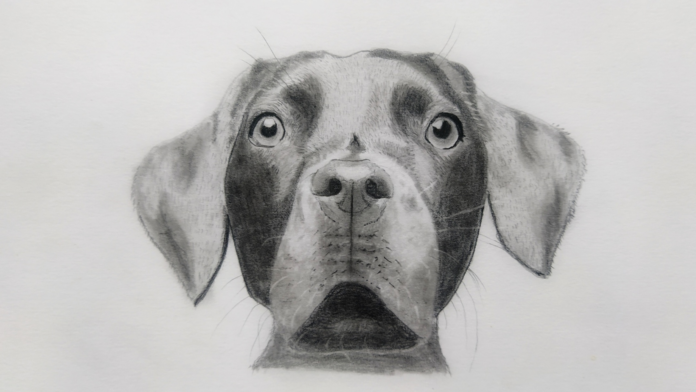Ever wondered how artists create those lifelike drawings of man’s best friend? It’s not just about talent, it’s also about understanding the subject. In this case, it’s all about getting to know the story with the unique features and characteristics that make a dog a dog.
Whether you’re an aspiring artist or a seasoned pro, this article will serve as an online guide you through the process of creating realistic dog drawings. From the initial sketch to the final shading, we’ll unravel the secrets behind capturing the essence of these beloved creatures on paper.
Drawing:skfktqthywc= Dog

Creating stunning portraits of dogs involves a careful balance between technical skill and intimate understanding of the subject matter. This section delves more into this intricate process.
Capturing the essence of a dog in a portrait doesn’t merely represent a matter of aesthetics. It also pertains to a process steeped in understanding and respect for the dog’s unique characteristics. A dog’s features — be it reflective eyes or expressive ears — tell a tale, revealing their personality, emotions, and essence. Drawing these features correctly ensures a comprehensive guide on the authentic representation, causing a deeper connection between the artist, the artwork, and its viewers.
Techniques and Tools Used
Turning a blank page into a lifelike portrait demands the use of specific drawing techniques and tools. Traditional artists might favor graphite pencils, ranging from hard (H) to soft (B) grades, granting the artist the ability to create varying lines and shading depths. On the other hand, digital artists often rely on software like Adobe Photoshop and Corel Painter, more so for their vast palette and layering abilities. Techniques, like creating a base layer of shading, using cross-hatching for textured areas, or employing a blending stump for smooth gradients, further elevate the realism of the drawing. Remember, a correct choice of technique or tool can make a significant impact, if not yield, artistic inspiration.
Key Artists and Their Contributions

Within the spectrum of canine artistry, some artists have ascended the ranks with their brilliant work and impactful contributions. These individuals, with their exceptional talent for capturing the nuanced expressions of dogs, have carved out a niche for themselves. They’ve created notable works that not only define their careers but also inspire modern artists. The following explores these artists and their body of work that focuses on dog illustrations.
Notable Works in the Genre
Sir Edwin Landseer, an eminent English artist, stands as a paragon in the field of animal portraiture, particularly dogs. A prominent piece, ‘The Monarch of the Glen’, epitomizes Landseer’s ability to infuse lifelike emotion and raw energy into his work. Similarly, two other artists, George Stubbs and Charles Burton Barber, also made significant artistic contributions. Stubbs, known for ‘Cheetah and Stag with Two Indian Attendants’, exemplified his proficiency in capturing animals in motion. Barber solidified his reputation through ‘A Special Pleader’, exhibiting an exceptionable understanding of a dog’s demeanor.
| Artist | Notable Work |
|---|---|
| Sir Edwin Landseer | The Monarch of the Glen |
| George Stubbs | Cheetah and Stag with Two Indian Attendants |
| Charles Burton Barber | A Special Pleader |
How These Artists Influence Modern Drawing

The legacy of these key artists permeates contemporary drawing. Landseer’s emphasis on dynamic portrayal influence illustrators to thoroughly study their subjects before embarking on a drawing journey. Stubbs’ focus on animals in motion instigates artists to capture energy and movement. Barber’s depiction of the dog’s emotions has trained modern artists to pay more attention to capturing the emotional depth of subjects. The mastery displayed by these artists continues to play a pivotal role in shaping the current state of animal – particularly dog – portraiture. Their principles provide a strong foundation for mastering canine drawing, prompting current and succeeding generations of artists to continually evolve their technique.
Beloved Creatures on paper
Mastering the art of dog drawing isn’t a one-day affair. It’s a continuous journey of learning and expressing creativity. The article’s insights into techniques, tools, and the work of key figures like Sir Edwin Landseer offer a solid foundation for any aspiring artist. It’s not just about technical execution but also about capturing a dog’s spirit and personality. Standout dog drawings often incorporate unique perspectives and artistic styles. Remember, each piece is unique and reflects the artist’s personal touch. So, keep practicing, keep learning, and most importantly, keep expressing your creativity. Your next dog drawing could be your best one yet.


